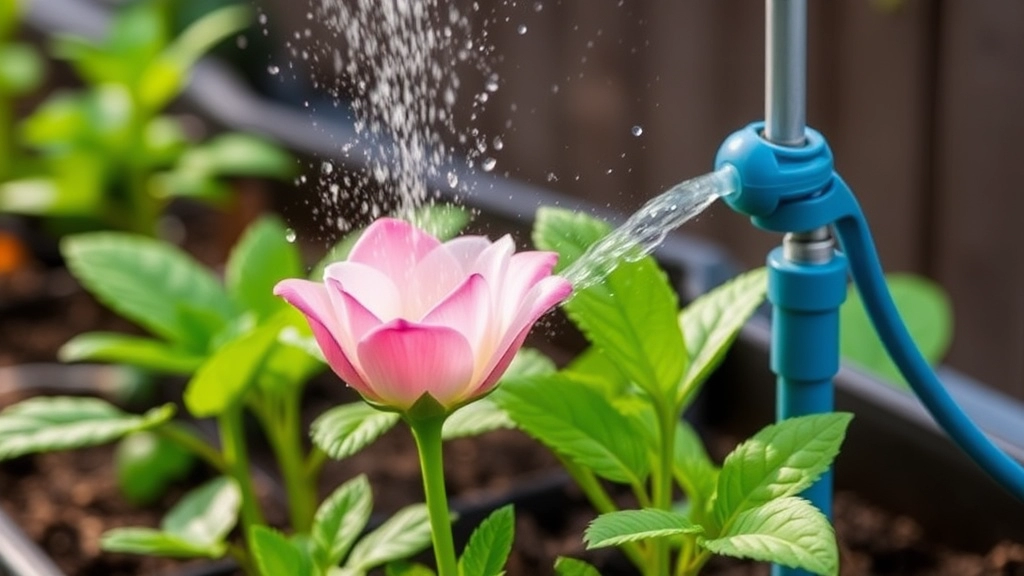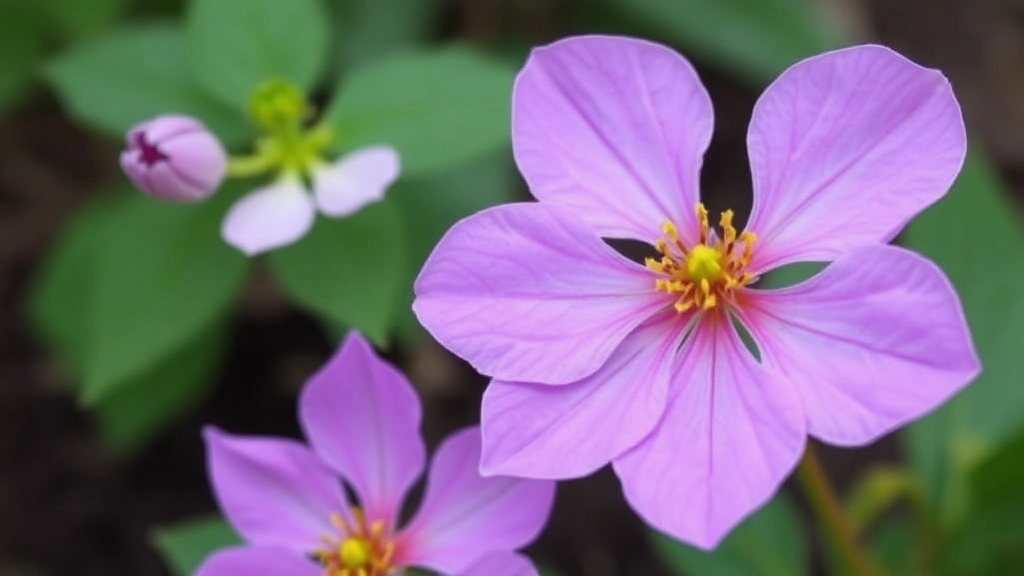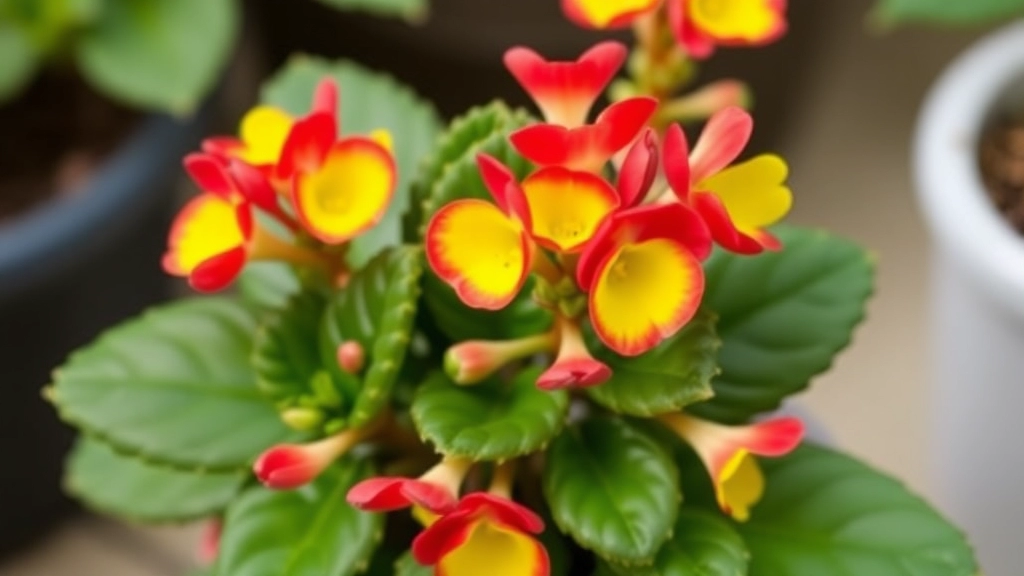Mastering Lucky Bells Kalanchoe Plant Care
If you’re looking to master Lucky Bells Kalanchoe plant care, you’ve come to the right place. This charming succulent, known for its vibrant blooms and easy maintenance, can be a delightful addition to any home. In this guide, I’ll walk you through everything you need to know, from ideal lighting and temperature conditions to watering, soil preferences, and even how to tackle common pests. Let’s dive in and ensure your Lucky Bells thrive.
Optimal Conditions for Lucky Bells
First things first, Lucky Bells Kalanchoe plants love bright, indirect light and a warm environment. Think of a sunny windowsill that’s not too harsh.
Watering and Soil Preferences
When it comes to watering, less is more—allow the soil to dry out between waterings to prevent root rot. A well-draining soil mix is essential, and don’t forget to fertilize during the growing season for those stunning blooms.
Propagation Tips
If you’re keen on propagation, this plant is a breeze to multiply. Stay tuned for detailed tips on each aspect of care to keep your Lucky Bells flourishing.
Ideal Lighting and Temperature for Lucky Bells Kalanchoe
When it comes to nurturing your Lucky Bells Kalanchoe, understanding its lighting and temperature needs is crucial. You might be wondering, “How can I create the perfect environment for my plant?”
Lighting Requirements
Lucky Bells Kalanchoe thrives in bright, indirect sunlight. Here are some essential tips to keep in mind:
- Optimal Light: Aim for at least 6 hours of bright, indirect sunlight daily.
- Avoid Direct Sunlight: Too much direct sunlight can scorch the leaves.
- Indoor Placement: Near a south or west-facing window is ideal, but ensure it’s not too hot.
Temperature Preferences
Temperature plays a significant role in the health of your Kalanchoe. Here’s what to consider:
- Ideal Range: Keep temperatures between 15°C to 25°C (59°F to 77°F).
- Avoid Extremes: Protect your plant from drafts and sudden temperature changes.
- Winter Care: During colder months, ensure it’s not exposed to temperatures below 10°C (50°F).
For more detailed guidance, check out our Comprehensive Kalanchoe Plant Care Guide and learn about the best lighting tips for Kalanchoe.
II. Watering Requirements for Optimal Growth

So, you’ve set the stage with the perfect lighting and temperature for your Lucky Bells Kalanchoe. But what about watering? This is where many plant parents trip up.
How Much Water Does Your Kalanchoe Need?
Lucky Bells Kalanchoe thrives on a careful watering schedule. Overwatering can lead to root rot, while underwatering can cause wilting. Here’s how to strike that balance:
- Check the Soil: Always feel the top inch of the soil. If it’s dry, it’s time to water.
- Water Thoroughly: When you do water, give it a good soak. Ensure that water runs out of the drainage holes.
- Drainage is Key: Make sure your pot has proper drainage. Standing water is a big no-no!
Seasonal Adjustments
Your watering routine might need a tweak depending on the season:
- Spring and Summer: These are the growing months. Water more frequently, about once a week.
- Autumn and Winter: The plant goes dormant. Cut back to every two weeks or even less.
Signs of Over or Underwatering
Keep an eye on your plant. Here’s what to watch for:
- Overwatering: Yellowing leaves and a mushy stem are clear signs.
- Underwatering: Leaves may shrivel and become crispy.
A Personal Touch
When I first got my Lucky Bells Kalanchoe, I was a bit too eager with the watering can. It took a couple of wilting leaves before I learned to ease up.
Best Soil Types and Potting Techniques for Lucky Bells Kalanchoe
Choosing the right soil and potting technique is essential for the health of your Lucky Bells Kalanchoe. A well-draining medium ensures that excess moisture doesn’t lead to root rot, which is a common concern for succulent lovers.
Fertilization Tips for Healthy Blooms

After ensuring your Lucky Bells Kalanchoe receives the right lighting, temperature, and watering, it’s time to focus on fertilization for optimal growth and vibrant blooms.
Many plant enthusiasts often wonder, “How can I encourage my Kalanchoe to bloom more profusely?” The answer lies in understanding the right fertilization techniques.
Choosing the Right Fertilizer
- Balanced Fertilizer: Opt for a balanced, water-soluble fertilizer with an NPK ratio of 10-10-10 or 20-20-20.
- Low Nitrogen: During the blooming phase, a low nitrogen fertilizer can help promote flowers over foliage.
When to Fertilize
- Growing Season: Fertilize every 4-6 weeks during the growing season (spring and summer).
- Dormant Period: Reduce or stop fertilizing in the fall and winter when the plant enters dormancy.
Application Tips
- Dilution: Always dilute the fertilizer to half the recommended strength to avoid burning the roots.
- Watering First: Water your Kalanchoe before applying fertilizer to ensure the roots absorb the nutrients effectively.
Observing Your Plant
- Signs of Nutrient Deficiency: Yellowing leaves or stunted growth may indicate a lack of nutrients.
- Bloom Monitoring: If blooms are sparse, consider adjusting your fertilization schedule.
Common Pests and How to Prevent Them
As you nurture your Lucky Bells Kalanchoe, you may encounter some common pests that can threaten its health and vibrancy. Understanding these pests and implementing preventive measures can ensure your plant thrives.
Common Pests
- Mealybugs
These small, white, cottony insects often hide in the leaf axils. They sap the plant’s juices, leading to wilting and yellowing leaves. - Aphids
Tiny and green, aphids can cluster on new growth. They can cause curling leaves and transmit diseases. - Spider Mites
These minuscule pests thrive in dry conditions. Look for fine webbing and speckled leaves as signs of an infestation. - Scale Insects
Scale appears as small, brownish bumps on stems and leaves. They also suck sap, weakening the plant.
Prevention Tips
To keep your Lucky Bells Kalanchoe safe from these pests, consider the following strategies:
- Regular Inspection
Check your plant weekly for any signs of pests. Early detection is key to preventing a larger infestation. - Maintain Humidity
Spider mites thrive in dry air. Increasing humidity can deter them. Consider misting your plant or using a pebble tray with water. - Proper Airflow
Ensure your plant has good airflow around it. This can help prevent the conditions that pests love. - Neem Oil Spray
A natural pesticide, neem oil can be effective against many pests. Spray it on your plant every few weeks as a preventive measure. - Quarantine New Plants
If you bring home new plants, keep them separate for a couple of weeks to ensure they are pest-free.
By implementing these preventive measures, you can protect your Lucky Bells Kalanchoe and encourage healthy growth. For more detailed care tips, visit our Complete Guide to Kalanchoe Paddle Plant Care and learn about Why Are My Kalanchoe Leaves Turning Soft?.
Propagation Methods for Expanding Your Collection
So, you’re loving your Lucky Bells Kalanchoe and want to multiply that joy?
Great idea! Propagation is not just a fun project; it’s a fantastic way to expand your collection without breaking the bank. Plus, who doesn’t love sharing plants with friends?
1. Leaf Cuttings
- Choose a Healthy Leaf: Pick a plump, healthy leaf from your plant.
- Cut It Right: Use a clean, sharp knife to cut the leaf at the base.
- Let It Callous: Place the leaf in a dry spot for a few days. This helps prevent rot.
- Plant It: Once calloused, place the leaf on top of well-draining soil. Lightly press it down, but don’t bury it.
- Water Sparingly: Mist the soil lightly and keep it in bright, indirect light.
2. Stem Cuttings
- Select a Stem: Look for a healthy stem with a few leaves.
- Make the Cut: Cut just below a leaf node using sterilized scissors.
- Dry and Callous: Let the cutting dry for a day or two.
- Plant in Soil: Insert the cutting into well-draining soil, burying it about an inch deep.
- Water Wisely: Water sparingly until you see new growth.
3. Offsets
- Look for Offsets: Lucky Bells often produce little offsets at the base.
- Gently Remove: Carefully pull the offset away from the parent plant.
- Plant It: Place it in its own pot filled with suitable soil.
- Water Lightly: Give it a light watering and place it in a bright spot.
Propagation can be an exciting journey, and it’s rewarding to see those little cuttings thrive. For more detailed guidance, check out our guide on propagating Kalanchoe Copper Spoons from cuttings. Additionally, if you’re interested in other propagation techniques, our Mother of Thousands care and propagation guide offers valuable insights.
FAQs on Lucky Bells Kalanchoe Plant Care
How often should I water my Lucky Bells Kalanchoe?
Water your Lucky Bells Kalanchoe when the top inch of the soil feels dry. During the growing season (spring and summer), this might be about once a week. In autumn and winter, when the plant is dormant, you can reduce watering to every two weeks or less.
What are the signs of overwatering and underwatering?
Overwatering signs include yellowing leaves and a mushy stem. Underwatering signs include shriveled and crispy leaves.
What type of fertilizer should I use for my Lucky Bells Kalanchoe?
Use a balanced, water-soluble fertilizer with an NPK ratio of 10-10-10 or 20-20-20. During the blooming phase, a low nitrogen fertilizer can help promote flowers over foliage.
When is the best time to fertilize my Lucky Bells Kalanchoe?
Fertilize every 4-6 weeks during the growing season (spring and summer). Reduce or stop fertilizing in the fall and winter when the plant enters dormancy.
How should I apply fertilizer to my Lucky Bells Kalanchoe?
Always dilute the fertilizer to half the recommended strength to avoid burning the roots. Water your Kalanchoe before applying fertilizer to ensure the roots absorb the nutrients effectively.
What should I do if my Lucky Bells Kalanchoe shows signs of nutrient deficiency?
Signs of nutrient deficiency include yellowing leaves or stunted growth. If you notice these signs, consider adjusting your fertilization schedule.
How can I encourage my Kalanchoe to bloom more profusely?
To encourage more blooms, use a low nitrogen fertilizer during the blooming phase and ensure your plant receives adequate light and proper watering. Monitoring and adjusting your fertilization schedule can also help.
References
-
Optimal Watering for Kalanchoe
-
Fertilization Tips for Kalanchoe
-
Seasonal Watering Adjustments for Kalanchoe
